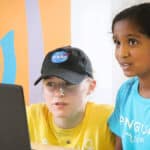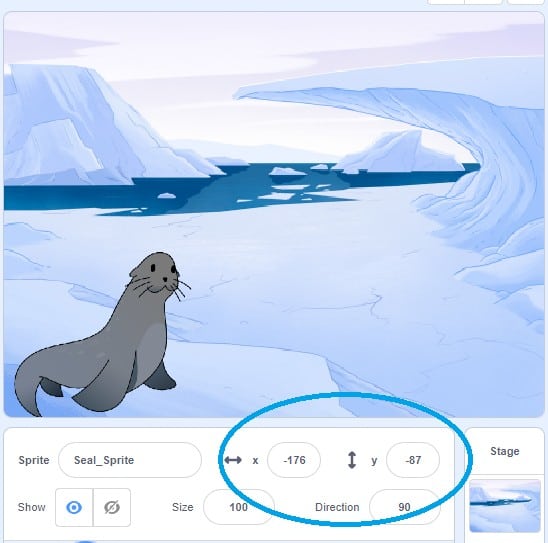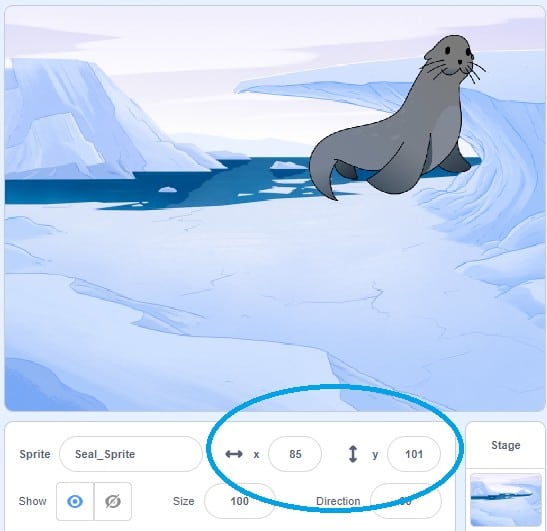Overview
In this lesson, students respond to writing prompts that require them to think about other/diverse perspectives via RAFT-style storytelling:
- Role of the Writer: Who are you as the writer? A movie star? The Prime Minister? A plant?
- Audience: To whom are you writing? A senator? Yourself? A future generation?
- Format: In what format are you writing? A diary entry? A newspaper article? A memoir?
- Topic: What are you writing about? Animals? Plants? The ocean?
Learning Objectives
- Write a story from a critically endangered animal’s perspective and translate it into a digital format using Scratch
- Develop an understanding of land and sea stewardship while learning to think from a different perspective
- Learn how important pristine habitat is for sustaining flora and fauna
Curriculum Links
Ontario: Reading, Writing and Coding and Emerging Technologies
- 1.2 – Developing Ideas
- 1.3 – Research
- 1.4 – Demonstrating Understanding
- 1.5 – Making Inferences
- 1.6 – Extending Understanding
- 1.7 – Analyzing Text
- 4.1 – Metacognition
- A2.1 – Write and Execute Code
Vocabulary
- Habitat
- the natural home or environment of an animal, plant, or other organism
- Perspective
- a particular attitude towards or way of regarding something; a point of view
- Endangered Species
- a species of animal or plant that is at serious risk of extinction
- Flora
- the plants of a particular region, habitat, or geological period
- Fauna
- the animals of a particular region, habitat, or geological period
- Pristine
- in its original condition; unspoiled
- Pollutant
- a substance that pollutes something, especially water or the atmosphere
- Deplete
- diminish or decrease in number or quantity
Reading Activity
Start by reading the Animals Illustrated series book Ringed Seal, written by William Flaherty and illustrated by Sara Otterstätter (or any story related to the topic). Go over the following material about ringed seals:
- Habitat
- Food sources
- Geographic locations
After reading the story, ask students to imagine they are ringed seals living in the pristine water in the north and create a rich backstory. Here is a sample:
Hi! My name is Ringo and I live way up in Nunavut Tunngavik in Northern Canada. I grew up in pristine conditions with clear and cool waters, plenty of food, and lots of resources for my siblings and me to rely on. We used to play and spend our days in the water, enjoying the clean environment of the Canadian Arctic. Until recently, we lived a peaceful and quiet life.
With the increase in the human population, I have new competition in my habitat. Humans have plundered the resources of my ecosystem via overfishing and polluted many of the pristine resources that my siblings and I rely on. Animals are not as adaptable as humans, so it is difficult for us to find alternate food resources. Now, with less food for my family and me, I have decided to leave the Arctic tundra and move somewhere else. I decided to move down south in hopes of finding better food resources and a cleaner habitat. But, it was a huge mistake. The waters down south were more polluted than I ever imagined. Food is not only scarce but also unhygienic. I have to navigate through lots of ocean debris, oil spills, fishing nets, and tons of plastic waste that humans dump in the ocean.
Sometimes, I mistakenly eat a piece of plastic because it looks like food. My friend, Tim the Turtle, told me he has lost many friends this way.
I just wish humans would use the resources more responsibly and think not of just themselves but of other creations on Earth who also rely on the natural resources of Mother Earth to survive.
Discussion Prompts
Lead the discussion by asking students to imagine they are the ringed seal from the story. Use the following prompts:
- How would you define your own habitat and the things you need to survive?
- What would you do or how would you survive if these resources become depleted?
- If you could not find food, what would you do?
- If you have to look for alternate sources of food or resources, where would you go?
Ask the students to pick:
- An original, natural, and pristine habitat
- A place the animal might move to, which could be a city or a swamp
- Three different animals that are local to the habitats the students have just picked
Computer Activity
After reading Ringed Seal, students watch the video below to learn about this endangered species.
Students will need the following materials:
- Scratch account (download if necessary)
- Media library
- Access to the internet and computers
Begin The Activity
Here’s an introduction to the Scratch interface. For the teacher’s reference, here is a story made in Scratch.
Once all the students are set up with Scratch profiles, introduce the Scratch interface. Students should follow these steps:
- Delete the existing sprite – a cat, and choose the animal(s) picked in the brainstorming session. To continue with the story we have just read, let’s pick a ringed seal sprite. Once it has been selected, the sprite will appear at the bottom right corner under the workspace. Feel free to choose multiple animals for the story.

- Add multiple backdrops and sprites, one for the original habitat and the other for the new one. From the built-in library, choose the Arctic/tundra backdrop and other potential habitats the sprite might want to move to, e.g. forest, wetlands, or underwater.
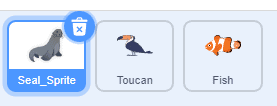
- Click on the yellow Events button from the panel on the left, select the when flag clicked block, and drag it to the coding area. This will be the start of your code.

- From the left-hand panel, click on the purple Looks block and choose the Say Hello! for 2 seconds coding block. Drag that block under the when flag clicked block (it will “click” into place). Add dialogue to introduce the sprite.

- Click on the sprite and make it move around the space. Notice that as the sprite is moved around, the X and Y coordinates on the screen change. From the blue Motion button on the left panel, drag and drop the go to X:___ Y:___ to the code area. Move the sprite to the bottom left of the stage. Check the values of the X and Y coordinates and add them to the code block.

- Next, code in the backdrop change. From the bottom right backdrop tab, add as many backdrops to the story as wanted. Choose the switch backdrop to block to choose the next backdrop.
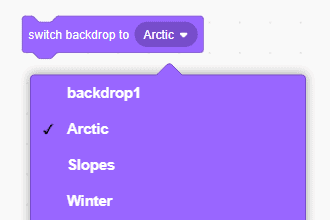
- To add dialogue, use the Say Hello! for 2 seconds block and write the dialogue. Click the orange Control button from the panel, drag a Wait 1 second to the code area. This block will add a pause between each dialogue.

- Be sure to write code for each sprite in the code area. Click each sprite and follow the above steps to add dialogue.
- Make sure to add the hide block at the end so the sprite doesn’t show at the start of the code. Click on the sprite to trigger the dialogue. The resulting code will look like this:
Code for Ringed Seal sprite:
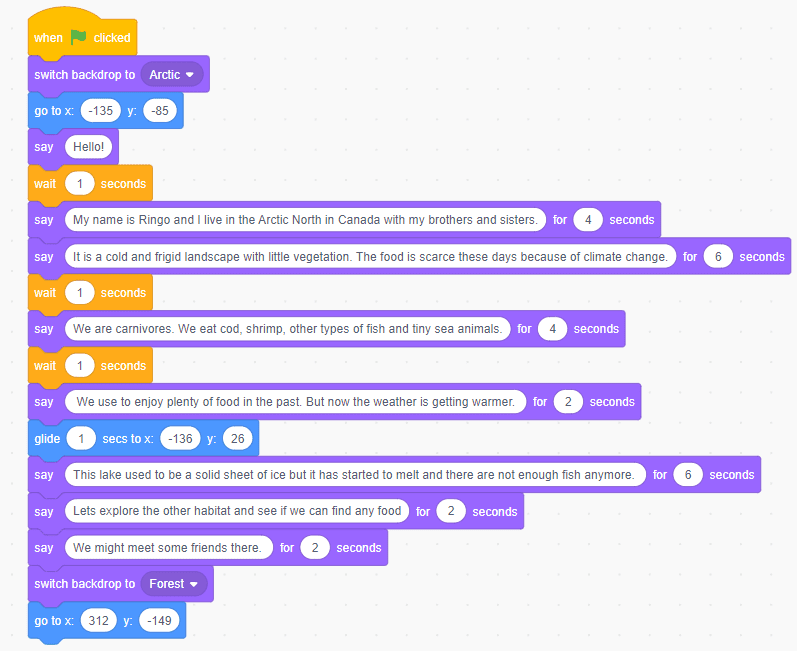
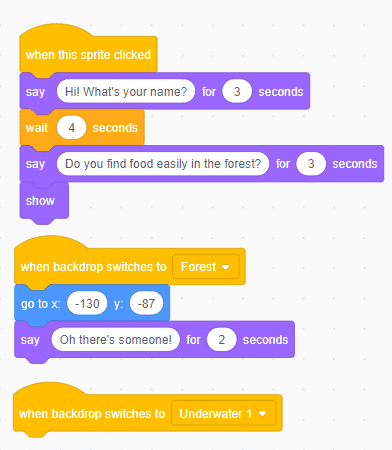
Code for Toucan sprite:
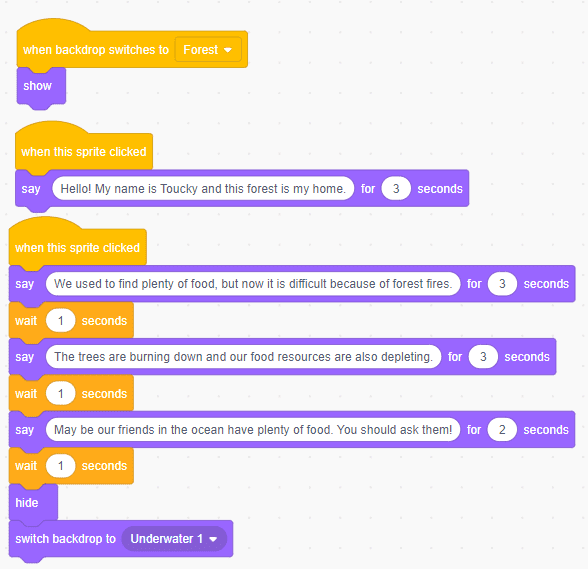
Code for Fish sprite:
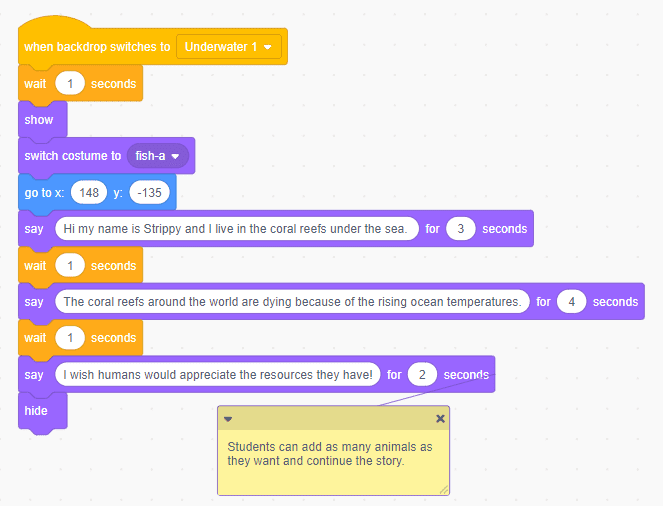
Students can use the following link to continue the story by adding more animals and backdrops. Once students have created their stories in Scratch, it’s time for them to present their work to their peers. (Scratch Projects)
Conclusion
Students are able to showcase their rendition of the story in a digital format and as an illustration. They understand the importance of preserving the environment and of land and sea stewardship from an animal’s point of view.
Extended Discussion
Students can explore literature and different animal habitats to broaden their understanding.
